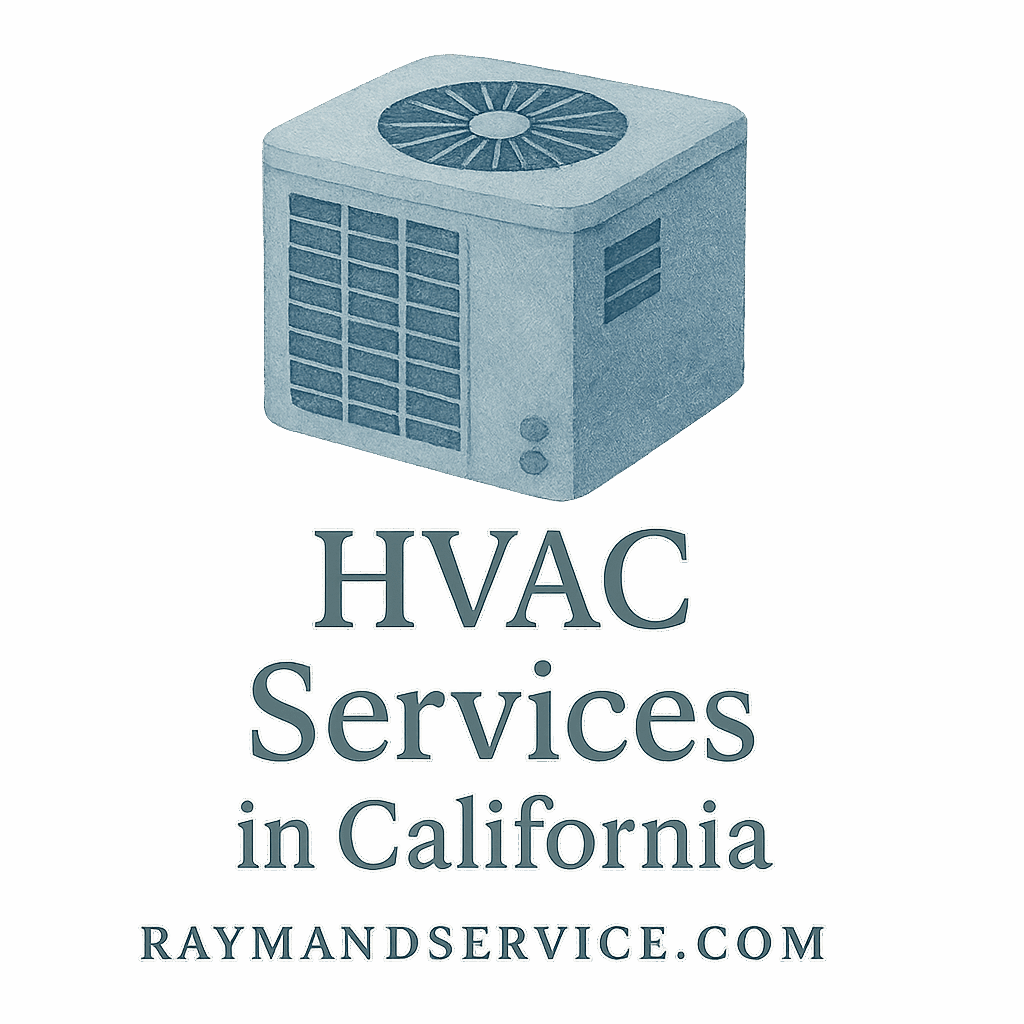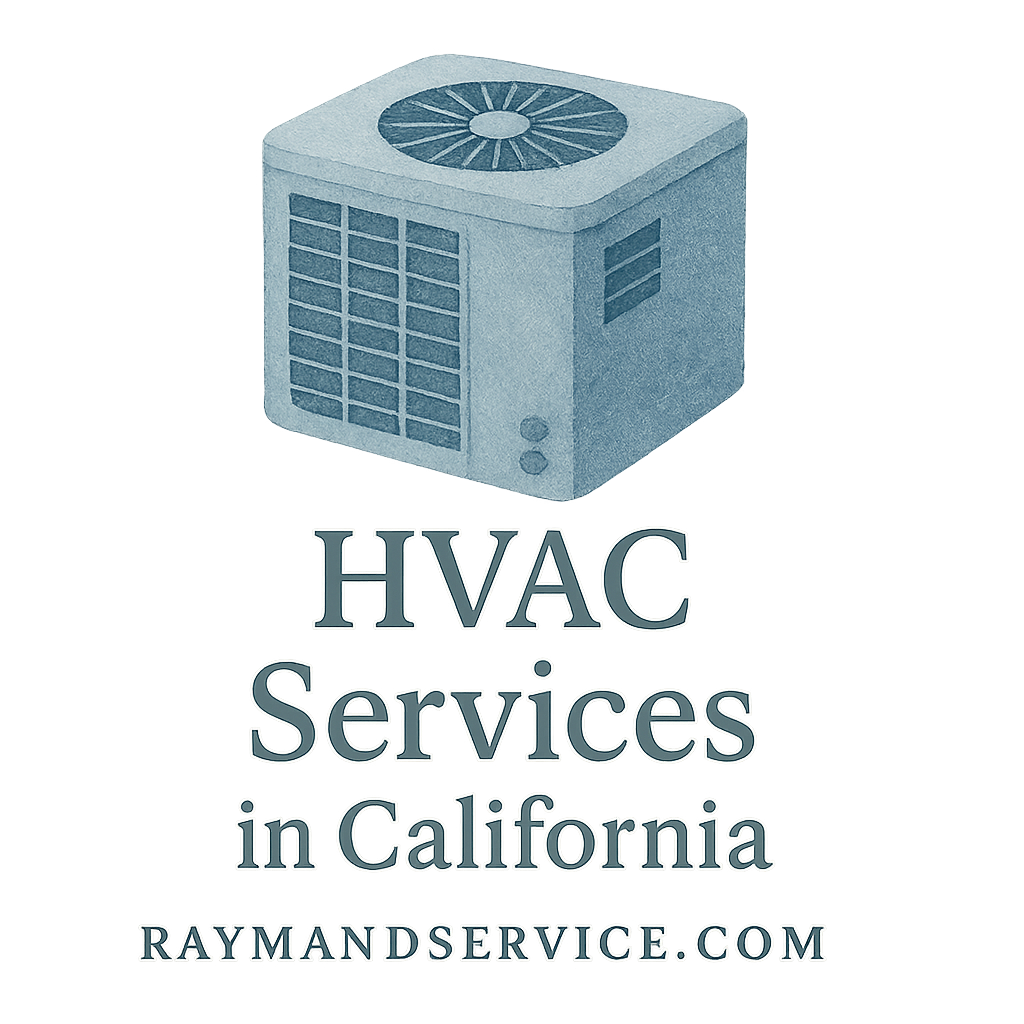Introduction
Commercial HVAC systems are the silent workhorses of office buildings, restaurants, factories, and retail spaces across California. But have you ever thought about what keeps these complex systems operating safely and legally? Behind the scenes, there’s a web of safety regulations for commercial HVAC services in California that protect workers, occupants, and property. Let’s dive into these rules and why they matter so much—especially if you’re running a business in the Golden State.
Why Safety Regulations Matter in Commercial HVAC
Safety isn’t just a checkbox—it’s the backbone of HVAC services in California. When something goes wrong with a commercial system, it’s not just about discomfort. It could mean health hazards, fires, system damage, or even lawsuits. That’s why following state and federal regulations isn’t optional—it’s critical.
At Raymand Services, safety and compliance are at the heart of everything we do, whether it’s a commercial HVAC service or a quick maintenance call.
Overview of California HVAC Compliance Standards
When it comes to California HVAC codes, it’s not a free-for-all. Technicians and contractors must navigate a range of standards:
California Mechanical Code (CMC)
This code governs the design, installation, and maintenance of HVAC systems. It ensures systems are energy-efficient, properly vented, and safe to operate in public or commercial spaces.
Cal/OSHA HVAC Guidelines
Cal/OSHA adds another layer, protecting workers who install, repair, and maintain HVAC systems. These rules cover everything from fall prevention to confined space entry and refrigerant safety.
1. Proper Licensing and Certification
What Licenses Are Required?
In California, all HVAC contractors must hold a C-20 license, issued by the Contractors State License Board (CSLB). It’s illegal to perform commercial HVAC work without it.
For those handling refrigerants, EPA Section 608 Certification is also required under federal law.
Importance of Hiring Licensed Technicians
Why risk it with unlicensed contractors? Licensed professionals:
- Understand state building codes
- Are insured for accidents
- Follow troubleshooting and maintenance best practices
- Keep your business legally protected
Hiring pros like Raymand Services ensures your system is in capable hands.
2. Equipment Installation Safety
Proper Placement and Ventilation
Improper installation can lead to major hazards like carbon monoxide buildup or overheating. California requires proper ventilation, clearance, and airflow in all commercial setups.
Want to know more about airflow standards? Check out this tag on airflow.
Electrical Safety in HVAC Installations
A significant number of HVAC fires originate from poor electrical connections. That’s why California mandates:
- Ground fault protection
- Proper circuit sizing
- Disconnect switches for service access
For energy-efficient upgrades that also follow safety rules, Raymand Services is the go-to.
3. Maintenance and Inspection Protocols
Routine Inspections and Record-Keeping
Routine inspections aren’t just good practice—they’re a legal requirement. According to Cal/OSHA and local codes, all commercial systems must be inspected and logged regularly.
Detecting Faults and Preventing Breakdowns
Catch small issues before they become disasters. Regular HVAC maintenance includes:
- Filter changes
- Belt inspections
- Refrigerant checks
- Motor lubrication
It’s all about preventing problems before they escalate—which is where expert maintenance teams come in.

4. Refrigerant Handling and Environmental Compliance
EPA Section 608 Certification
This federal rule is non-negotiable. Anyone who services or disposes of refrigerant-containing equipment must be certified.
California-Specific Regulations for Refrigerants
California takes it further. Due to environmental concerns, hydrofluorocarbon (HFC) use is restricted under CARB regulations. Leaks must be reported, and low-GWP (global warming potential) refrigerants are encouraged.
Raymand Services supports eco-friendly upgrades for businesses looking to reduce their carbon footprint.
5. Worker and Occupant Safety During Servicing
Personal Protective Equipment (PPE) Requirements
Cal/OSHA requires technicians to wear PPE when working on commercial units. This includes:
- Respirators (when needed)
- Protective gloves
- Safety glasses
- Steel-toed boots
Technicians also must follow lockout/tagout procedures before performing repairs.
Noise and Air Quality Controls
HVAC systems can be loud and affect indoor air. California mandates noise-control barriers and air filtration systems for units in high-occupancy areas.
Raymand Services is committed to improving indoor comfort while maintaining compliance.
6. Emergency Procedures and Shut-Off Protocols
Fire Hazards and Electrical Risks
Commercial systems deal with high-voltage components. Fire hazards are addressed through:
- Fire-rated walls around mechanical rooms
- Smoke detectors near units
- Fire extinguishers accessible within 75 feet
Emergency Shut-Off Switches
By law, all commercial HVAC units must have:
- Clearly labeled emergency shut-off switches
- Training for occupants and employees on how to use them
- Service technicians must verify functionality during each visit
Seasonal maintenance from Raymand Services ensures you’re never caught off-guard.
The Role of Professional Commercial HVAC Services
Compliance with Safety Laws and Building Codes
Professionals stay updated with the latest safety regulations and make sure every job is up to code.
At Raymand Services, we help you:
- Stay compliant with all regulations
- Avoid unexpected shutdowns
- Improve energy usage and reduce utility bills
Partnering with Trusted Experts Like Raymand Services
From residential to full-scale commercial HVAC services, Raymand Services has you covered across California. Our experienced technicians are trained to uphold every safety standard so your business doesn’t skip a beat.
Conclusion
There’s no shortcut to safety. In California, safety regulations for commercial HVAC services aren’t just red tape—they’re lifelines. They protect your business, your people, and your bottom line.
Whether it’s licensing, installation, or emergency procedures, staying compliant isn’t just a legal necessity—it’s the smart thing to do.
And you don’t have to figure it all out on your own. With Raymand Services, you’re not just hiring an HVAC contractor—you’re gaining a partner committed to sustainability, efficiency, and total peace of mind.
FAQs
1. What licenses are required for commercial HVAC services in California?
A C-20 license from the CSLB and an EPA Section 608 certification are required.
2. How often should commercial HVAC systems be inspected?
At least twice a year, ideally during seasonal changes. Seasonal HVAC services ensure optimal performance.
3. What are the key safety concerns with commercial HVAC installations?
Fire risks, refrigerant leaks, electrical hazards, and poor ventilation are major safety concerns.
4. Are there environmental laws specific to California HVAC systems?
Yes, California restricts HFCs and enforces strict refrigerant leak reporting and usage of low-GWP refrigerants.
5. Can I do my own HVAC maintenance?
Only licensed professionals should handle major maintenance, due to the safety and legal implications. Always consult experts like Raymand Services.
6. What role does PPE play in HVAC safety?
PPE is essential for protecting workers from chemical exposure, electrical hazards, and mechanical injuries.
7. Where can I find trusted commercial HVAC services in California?
Look no further than Raymand Services. They’re industry leaders in compliant, energy-efficient HVAC solutions across California.


